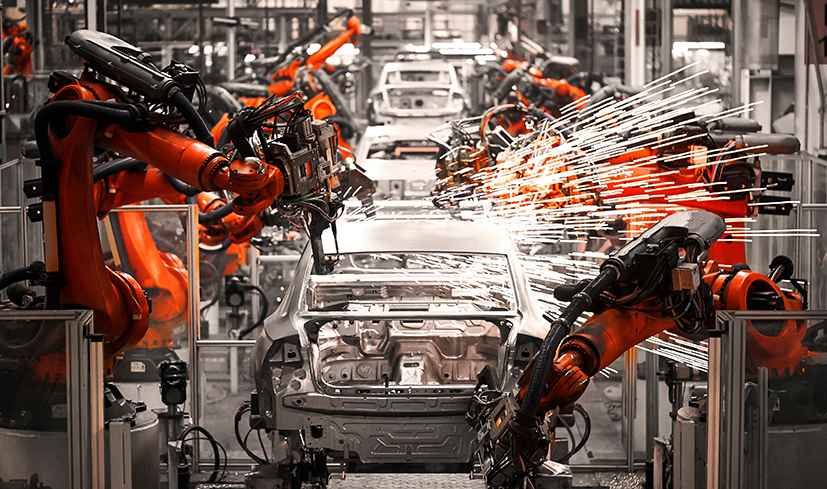SME manufacturers reported unchanged output volumes for the second consecutive quarter in the three months to January, according to the CBI’s latest SME Trends survey. Total new orders fell slightly, with export orders down sharply. Firms expect new orders and output volumes to grow modestly over the next three months.
Growth in average costs accelerated in the quarter to January, ending six consecutive quarters of steadily easing cost pressures. Costs growth remained well above average. However, both domestic and export prices were unchanged through the quarter, implying a squeeze on profitability.
Against this background, investment intentions remain weak. SMEs plan to cut investment in buildings and plant & machinery over the year ahead. Around half of respondents cited demand uncertainty as a constraint on capital spending.
Concerns around the availability of finance have also risen (internal and external finance), while the share of SMEs reporting the cost of finance as a barrier to investment rose to its highest since the 1990s (excluding the early stages of the pandemic).
Investment in innovation is expected to be stable, while spending on training & retraining is expected to increase only slightly.
Ben Jones, CBI Lead Economist, said: “Sentiment among SME manufacturers was flat around the turn of the year. Faced with stagnant demand, ongoing pressure on costs, a tighter financing environment and enduring difficulties finding the skills they need, firms are taking a hard look at their overheads and plan to cut back investment over the year ahead.
“SME manufacturers nonetheless remain hopeful that activity will begin to revive in the coming months, after an exceptionally challenging 18 months. The Budget in early March provides an opportunity for the Chancellor to build on this sense of hope by taking further steps to firm up the foundations of future growth.
“Following the encouraging announcements around capital expensing in the Autumn, firms will be looking for measures that can help address labour and skills shortages. Expanding non-taxable health support for employees by making Employee Assistance Programs (EPAs) a fully tax-free benefit would go some way to alleviate this.
“Establishing a R&D tax credit scheme alongside a Net Zero Investment Plan would give business a competitive edge, supercharge investment in high-growth sectors and drive technology and innovation.”
The survey, based on the responses of 237 SME manufacturing firms, found:
- Business sentiment was unchanged in the three months to January after deteriorating sharply last quarter (balance of -2% from -17% in October). Export optimism also fell, at a slower pace than in the three months to October (-7% from -22% in October).
- Output volumes were broadly unchanged in the quarter to January (balance of +1% from +2% in October) but are expected to rise modestly over the next three months (+8%).
- Orders or sales were the most commonly cited factor likely to limit output in the next three months (65% from 64% in October).
- The share of firms citing a shortage of materials or components was broadly stable (25% from 26% in October).
- The share citing a shortage of skilled labour as a likely constraint on output fell (to 28% from 36% in October) but stands well above the long run average (18%).
- The share citing credit or finance as a likely limit on output was broadly unchanged through the quarter (11% from 9% in October, matching the joint highest figure since October 2009, excluding the pandemic period).
- Total new orders fell slightly in the three months to January (balance of -2% from +1% in October) and are expected to grow marginally in the next three months (+6%). Export orders fell sharply (-16% from 0% in October) and are expected to fall again in the next three months (-10%).
- Growth in average costs per unit of output accelerated in the quarter to January, ending six consecutive quarters of slowing cost growth (balance of +43% from +30% in October). Costs are expected to rise at a similar pace over the next three months (+41%).
- Domestic selling prices were unchanged (balance of +1%, from +7% in October). Export prices were also unchanged in the quarter (+3% from 0% in October). Domestic selling prices are expected to rise next quarter (+14%), and export selling prices are expected to remain unchanged (+3%).
- Numbers employed increased at a modest pace in the quarter to January (+8% from -7%). SMEs expect headcounts to be unchanged in the next three months (0%).
- Investment intentions for the year ahead were mixed. SME manufacturers expect to increase investment in training & retraining (+7% from +6%) and product & process innovation is expected to be unchanged (+2% from +3%). But investment in tangible assets such as buildings (-22%, unchanged from October) and plant & machinery (-12%, from -10%) is expected to fall.
- The main constraint on investment was uncertainty about demand (cited by 53% of firms), followed by labour shortages (24%). Financing constraints on investment have risen to multi-decade highs with the cost of finance (23%, its highest since January 1991, excluding the pandemic) and a shortage of internal finance (also 23%, at its highest since October 2013, again excluding the pandemic period) standing well above their long-run averages.



